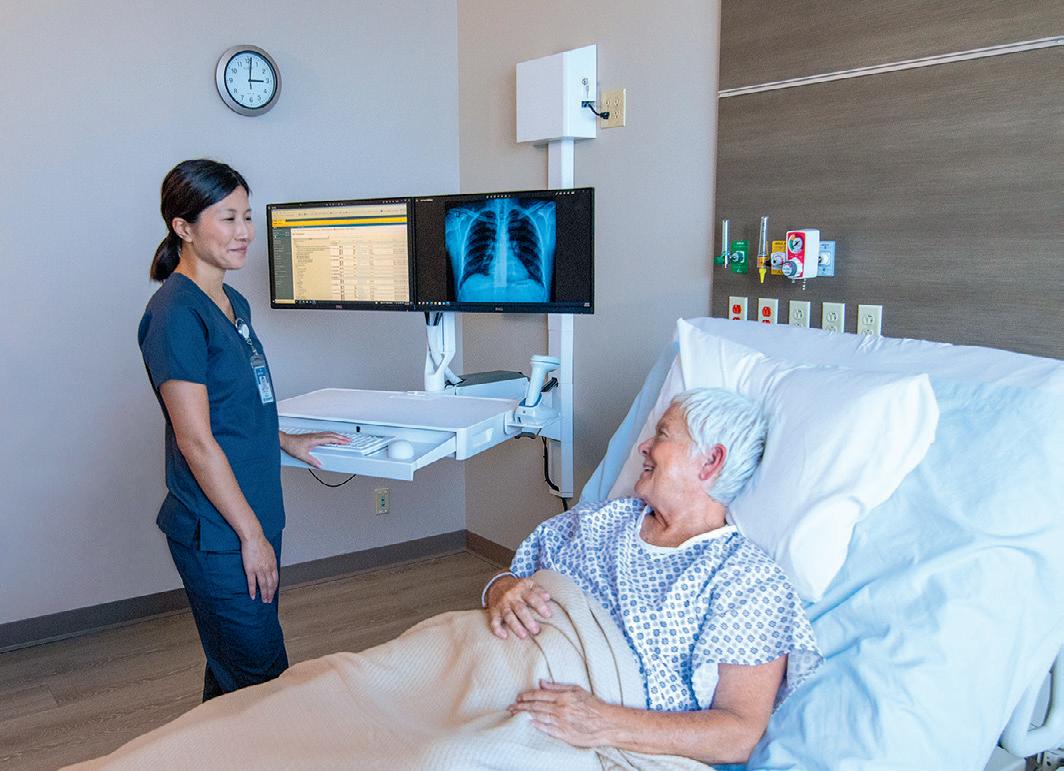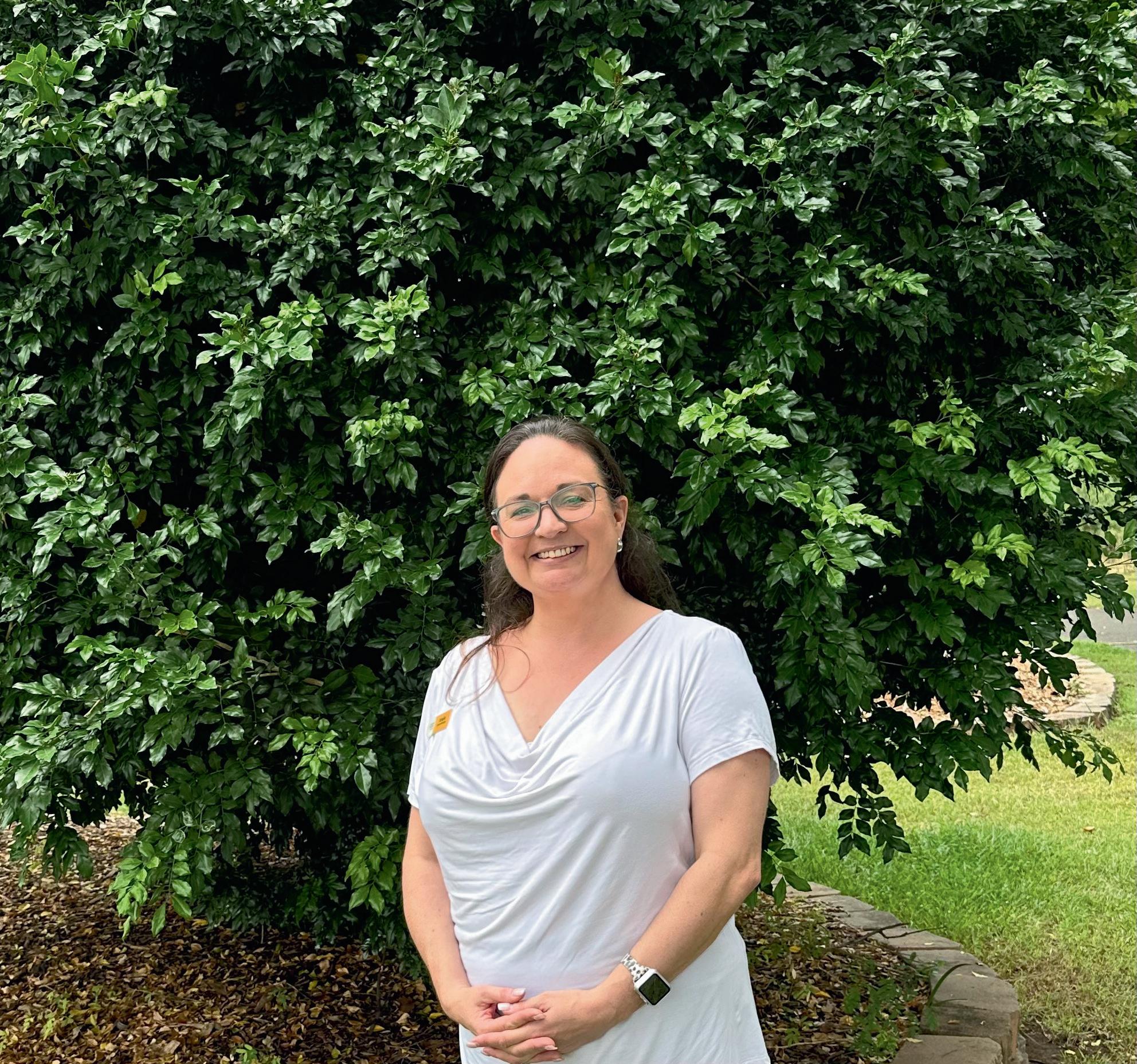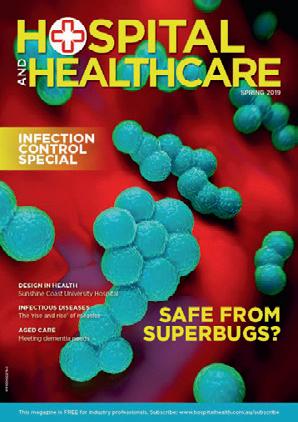

Breathe easy

Freestyle Comfort
Expand your comfort zone with this innovative and powerful design: Compact and Lightweight
• Lasts all day
• Ergonomically Designed Quiet

Caire provides everything you need for your oxygen therapy, from oxygen concentrators to accessories, we are dedicated to helping you breathe easy.


NewLife Intensity 10

Combining portability with clinical efficiencygiving you the freedom to travel and enjoy life on the go: Compact and transportable
• Extended Battery Life
• Quiet 24/7 Use
Stationary oxygen concentrator that’s durable with a high continuous flow: Higher flow options for patients in hospitals or long-term care facilities
• Dual flow option allowing two patients to use simultaneously
• Easy to service and maintain
A power efficient stationary oxygen concentrator is the must have for your home oxygen delivery needs:

• Lightweight and easily transportable
• Low failure rate with no preventative maintenance schedule
Lockable flow meter



FROM THE EDITOR
The months are just flying by — can you believe that we are already almost halfway through 2024? Yet here we are, and the May issue of Aged Health is now landing with readers. In this issue, we take another dive into the aged care reforms, as well as focusing on the overall wellbeing of aged care residents.
Changes to in-home care are just one of a raft of measures proposed in the wake of the Royal Commission into Aged Care, which delivered a scathing report detailing neglect, abuse and below-average care for nursing home residents. In this edition of Aged Health, Denise Cullen takes a look at what aged care providers need to know ahead of the proposed changes.
Still on the subject of aged care reform, Debbie Sage undertakes a legal analysis of the new statutory duties and penalty regimes that have been introduced in the Aged Care Act exposure draft — areas which she believes require further consultation and review. Turn to page 10 to find out more.
By attaching human capital management to employee experience, aged care providers can mitigate the understaffing issues that have plagued the sector — largely due to low pay, workload and the danger of infection during the COVID-19 pandemic. On page 22, Jo-Anne Ruhl explores the benefits of a sophisticated human capital management system and what providers need to know.
If you would like to submit a thought leadership article or a case study that highlights where a particular aged care provider is excelling, please do get in touch on the email address below. Happy reading!
Amy Steed Editor ah@wfmedia.com.auCONTRIBUTORS

Denise Cullen Journalist and psychologist

Debbie Sage Partner and Head of Aged Care, Attwood Marshall Lawyers

Stephen Rooke Principal Consultant, G5Strategic

Jo-Anne Ruhl Managing Director and Vice President, Workday Australia and New Zealand



TO IN-HOME CARE: REFORMS

WHAT PROVIDERS NEED TO KNOW
Proposed changes to in-home care are supposed to make things simpler for older Australians, but providers say legislative delays are making it difficult for them to plan ahead, writes DENISE CULLEN.
Liesel Wett OAM, Chair of Goodwin Aged Care Services, which provides in-home care services to 1000 people across the greater Canberra region, said the lack of detail about policy direction and the recently announced delay in releasing the draft new Aged Care Act is stymying efforts.
“All the uncertainty is a problem,” she said.
Changes to in-home care are just one of a raft of measures proposed in the wake of the Royal Commission into Aged Care, which delivered a scathing report detailing neglect, abuse and below-average care for nursing home residents.
In all, it delivered 148 recommendations, including the development of a new in-home aged care program which rolled existing programs into one, and introduced a common set of eligibility criteria, a single assessment process, certainty of funding and genuine choice and flexibility for users of aged care services.
THE NEED FOR GREATER INDEPENDENCE
Speaking in a briefing that remains available on the federal Department of Health and Aged Care website, Nick Morgan, Assistant Secretary of the Support at Home Reform Branch, said the new arrangements sought to help older people stay independent in their homes for longer.
The changes would be implemented in two stages to create a single in-home aged care program that brought together the existing Commonwealth Home Support Program, Home Care Packages and Short-Term Restorative Care.
“We want to have a greater emphasis on independence through upfront supports like handrails and allied health to keep people active,” he said.
The single assessment system was scheduled to commence from July 2024.
A trial undertaken in 2023 using the new one-size-fits-all assessment tool collected data that is currently being used to determine the final classifications funding levels under the new Support at Home program.
From July 2025, Support at Home was due to commence by replacing the Home Care Packages and Short-Term Restorative Care Programs. The Commonwealth Home Support Program would then transition to the new program no earlier than July 2027.
This staging reflected feedback from peak bodies and providers that more time was needed for these providers to adjust “to mitigate the risk of provider exits or failures associated with the changes”.
WHAT DO PROVIDERS NEED TO KNOW ABOUT THE CHANGES?
According to Patricia Sparrow, CEO of COTA Australia, the proposed in-home care reforms were significant and went beyond combining existing programs.
“It’s crucial that the design process centres the needs and preferences of older Australians, particularly over their desire to self-manage their care,” she explained.
“Boards and directors will need to make sure they have the right systems and processes in place to support this.
“Delays to these important reforms will only keep the current system in place, hindering efforts to boost access, cut wait times and ultimately limit older Australians’ ability to self-manage their care and live independently in their homes for as long as possible.”
Wett also signalled support for the shift towards greater consumer-directed care. A single set of rules and entry point for consumers to access the services they needed “makes perfect sense”, she added.
Yet aged care providers needed more information to firm up their workforce, technological and other plans.
“If there needs to be a major shift in how services are delivered, or what services are delivered, we need to know what they are,” she said.
For example, significant changes to the types of services an in-home carer could provide — such as domestic help or gardening services — might mean that parts of a provider’s workforce could no longer be deployed.
“When you’re running a company, you want certainty in policy direction, so you know where to invest your resources to best meet your client base,” Wett said.
“If we don’t know what those levers might be, we can’t plan for it (and) the people that suffer are patients, consumers or, in this case, older Australians.”
QUESTIONS SURROUNDING BUDGET ALLOCATIONS
Another upcoming change to in-home care concerns how client budgets are allocated.
FROM JULY 2025, SUPPORT AT HOME WAS DUE TO COMMENCE BY REPLACING THE HOME CARE PACKAGES AND SHORT-TERM RESTORATIVE CARE PROGRAMS. THE COMMONWEALTH HOME SUPPORT PROGRAM WOULD THEN TRANSITION TO THE NEW PROGRAM NO EARLIER THAN JULY 2027.

Morgan noted that budgets were previously reset each quarter so unspent funds did not accumulate.
“We’re now proposing that people be able to retain savings of (up to) $1000 for unexpected expenditure if they don’t fully expend their budgets,” he added.
“In the past we had put forward a concept of providers having access to a flexible pool of funds to support people as their needs change.
“This is no longer part of the program design given both the ability to save funds and the proposal to allow budget pooling to provide additional flexibility.”
Wett pointed out that “those resources belong to the client, not to the provider” and again called for further details on the way ahead.
Goodwin Aged Care Services is forging ahead with its planning process even in the absence of firm guidelines.
“For organisations like mine, that support a large number of Canberrans and South Coast people, we need to be able to tell our consumers what (the future) looks like and how we can help them live their best lives,” Wett said.

Denise Cullen is a Brisbane-based journalist and psychologist who writes on a diverse range of issues, including mental health, criminology, safety and aged care.
FALLS PREVENTION:

Dpersonal consequences, with 130,000 older Australians hospitalised for a fall and 5000 Australians dying from a fall each year.
However, a Flinders University study suggests that regular exercise and a personalised falls prevention plan could be the key to prevention.
FALLS IN CARE HOMES
In residential aged care homes (often called nursing homes), falls are even more common and more frequently serious.
The Royal Commission into Aged Care Quality and Safety has highlighted the urgent need to address falls in this setting and falls have become a mandatory quality indicator and a contributor to the star rating of nursing homes.
To date, evidence on how to prevent these falls has been extremely limited. However, Flinders University researchers Dr Suzanne Dyer and Dr Jenni Suen have now produced two new research papers that reveal clear guidance on how to successfully reduce falls for residents in aged care homes.
“We have found that both regular exercise and a personalised falls prevention plan based on each resident’s individual needs should significantly reduce the likelihood of a fall,” Dyer said.
“We know that exercise programs designed for older people can reduce falls by building strength and balance, but they must be consistent; if they stop exercising, the benefits are lost.
“Much like any exercise program, it should include a combination of exercise types such as balance and resistance and be tailored, allowing for individual abilities and preferences.”
WHY INDIVIDUAL ASSESSMENT MATTERS
The research also highlights the importance of having an individual falls risk assessment for each person, allowing for the flexibility of care home staff to make adjustments where required, according to Suen from the College of Medicine and Public Health.
“Falls were reduced when different interventions (such as exercise programs, mobility aids, glasses, changing medications or modifying the environment) were given based on an individual’s falls risk assessment.
“However, this was only true when the care home staff and managers were able to modify the strategies according to specific circumstances, for example, considering whether they had dementia or not,” Suen said.
AUSTRALIAN FALLS PREVENTION GUIDELINES
The research papers have been pivotal in informing the soon-to-be-released, newly updated Australian falls prevention guidelines that are currently open for consultation.
“Given the serious consequences for residents and the associated high costs of falls, it is critical that adequate resources are provided to ensure that falls prevention programs can be ongoing in aged care homes, particularly including exercise tailored to residents,” Dyer said.
“By combining consistent and appropriate exercise with a personalised falls prevention strategy that can be adapted by care home staff, we should see a reduction in falls for older people living in residential care,” Suen said.
“These simple additional considerations for both residents and staff appear to differentiate between successfully preventing falls or not. Therefore, considering these factors when planning a falls prevention program in residential aged care could make all the difference.”
MORE BALANCE NEEDED FOR NEW PENALTIES AND COMPENSATION REGIME AGED CARE REFORM:
Impending regulatory changes are set to redefine Australia’s aged care sector by introducing civil penalties, criminal offences, and a whole host of new responsibilities for providers. However, uncertainties remain regarding their practical implementation and providers need to stay engaged as details emerge, writes DEBBIE SAGE, Wills and Estates and Aged Care Partner at Attwood Marshall Lawyers.
Australia’s aged care sector is on the cusp of its biggest shake-up in 27 years. A brand new Aged Care Act, which prioritises high-quality care and is centred on the rights and needs of older citizens, is due to roll out later this year.
Stemming from the recommendations laid out in the 2021 Royal Commission into Aged Care Quality and Safety, this new Act seeks to address the shortcomings of the outdated 1997 Aged Care Act , deemed unfit for purpose today.
The new Aged Care Act brings extensive changes across many areas of care.
This article focuses only on the new statutory duties and penalty regimes that have been introduced in the exposure draft — areas which the author believes require further consultation and review.
WHAT PROVIDERS NEED TO KNOW
Expanded duties
The exposure draft of the Act, published in December 2023, outlines new statutory duties for both “registered providers” (such as aged care facilities) and “responsible persons” (individuals with authority or significant influence over care, including aged care workers).
Registered providers will have a fundamental obligation to ensure, so far as “reasonably practicable”, the health and safety of individuals receiving funded aged care services, mirroring existing workplace health and safety frameworks. Meanwhile, “Responsible persons” will have a separate statutory duty to ensure they exercise “due diligence” and are complying with their duties under the Act. This will require them to take reasonable steps to discharge their obligations effectively and adhere so far as “reasonably practicable” to the new Statement of Rights and Statement of Principles.
Compensation schemes
New compensation avenues will be available to target instances of “serious, poor quality and unsafe care”. These “compensation pathways” will offer redress to affected individuals with a six-year statutory limitation period to bring a claim.
Stronger penalties
The Act introduces heightened civil and criminal penalties, including strict liability offences for registered providers and responsible persons. The new civil and criminal penalties involve conduct that exposes an individual in their care to a risk of death, serious injury, or illness or involves a significant failure that is part of a systematic pattern of conduct, whereas the strict liability offences involve conduct which amounts to serious failures and/or results in death, serious injury or illness.
Need for review
Interpreting what is “reasonably practicable” within the new expanded duties is already causing significant debate and concern. Careful consideration of individual circumstances will be required to strike a balance between a resident’s preferences, including their right to dignity of risk, and their safety.

And while the new compensation and penalty regimes mark a crucial step towards a more accountable system, further review is needed to ensure that any penalties imposed are proportionate to the offence.
Providers will understandably have concerns about the implications of the proposed reforms, particularly over the strict liability offences that do not exist in adjacent sectors such as disability and health.
The inclusion of criminal penalties, for example, was not recommended by the Royal Commission but is part of an election promise. There are fears in the industry that this could discourage whistleblowing, deter skilled workers from entering the sector and reduce accurate incident reporting. The inclusion of criminal penalties without considering fault raises important questions over fairness and practicality.
Boards and governing bodies, often staffed by volunteers, will no doubt be wary of continuing their involvement due to the risk of personal liability, at a time when creating and maintaining robust risk management strategies should be the focus.
PREPARING FOR THE FUTURE
While details are still emerging, providers can get ahead by reviewing their current risk management strategies and discussing potential insurance coverage with insurers. This includes directors’ and officers’ insurance, and public liability insurance to manage potential liabilities.
While there are uncertainties over the operation and effectiveness of the “compensation pathways” as currently drafted, providers should be preparing policies and systems to manage this.
Amid the uncertainty surrounding the final penalty regime, two certainties remain: responsibilities will evolve, and a form of penalty will remain. We should aim for penalties that reflect the severity of the offence without overburdening staff or providers.
And finally, it’s important that providers anticipate new responsibilities and take preemptive measures to mitigate risks and strive for high-quality care.
Open communication between providers, regulators and insurers will be key to a smooth transition during this period of significant change for the aged care sector.
Collaborative efforts involving all stakeholders are essential to refine the proposed legislation, address concerns, and pave the way for a resilient and sustainable aged care sector.

Debbie Sage is a Partner and head of the Aged Care department at Attwood Marshall Lawyers. She is an accredited aged care professional and has over 20 years’ experience in wills and estates, representing many clients who live in aged care facilities or who are preparing for their transition into aged care. Debbie is passionate about fighting for change and is an ardent advocate for the safety and wellbeing of the elderly community.




DESIGN MATTERS
DEMENTIA PATIENTS VILLAGE SPACE REVAMP FOR
A village-like space has been unveiled within the Cognitive Assessment and Management (CAM) Unit at The Prince Charles Hospital in Brisbane.






Supported by The Prince Charles Hospital Foundation via The Common Good initiative, the hospital has recently implemented ‘Charlie’s Village’ — a transformation of the unit’s outdoor area into a village-like space, which includes custom-built familiar facades such as a hair salon, bakery and cafe, general store, hotel and post office.
This community area sits within the specialist dementia care unit, where patients with dementia and other cognitive impairments receive care — with an average stay duration of 29 days.
The facility revamp was designed in collaboration with frontline clinicians and geriatricians to create environments for patients in the ward to visit. The overarching goal was to help them feel confident and connected, while also allowing them to maintain some independence and mobility.
Given that research shows the surrounding environment can trigger behavioural changes in patients with dementia, this new space will also assist staff in managing those behaviours as it allows for positive diversion. Patients often have tea and coffee with their friends and family within this outdoor space, so the rejuvenation makes it an even more inviting place where loved ones can spend time together.
“I think Charlie’s Village will help people feel more settled. They’ll feel like they’re at the shops or at the cafe rather than in that acute hospital setting. It will give them something to engage with cognitively, and as the familiar scenes may jog some people’s memories and elicit feelings of nostalgia, they may have conversations about life outside of hospital and what they used to do,” said Khera Kim, Nurse Practitioner Delirium and Dementia Service, The Prince Charles Hospital.
“Bringing patients into an environment that’s more homely or looks like a normal community can help people feel better about themselves, and their quality of life can improve.”
The upgrade to The Prince Charles Hospital’s CAM Unit was proposed as part of The Prince Charles Hospital Foundation’s 2022 Giving Day.
“This is a prime example of the significant and positive impacts that can be achieved when people come together to help others live healthier for longer. We are so excited that this space is now a reality for patients and their families, and are proud to facilitate a project on behalf of the community that will help so many people for years to come,” said Steve Francia, CEO of The Prince Charles Hospital Foundation.
I THINK CHARLIE’S VILLAGE WILL HELP PEOPLE FEEL MORE SETTLED. THEY’LL FEEL LIKE THEY’RE AT THE SHOPS OR AT THE CAFE RATHER THAN IN THAT ACUTE HOSPITAL SETTING.
IMPROVING MUSCLE HEALTH THROUGHOUT THE AGING PROCESS

Ahuman muscle map has revealed the processes behind age-related muscle deterioration, and the mechanisms to counteract them.
As humans age, their muscles progressively weaken. This can affect the ability to perform everyday activities like standing up and walking. For some people, muscle loss worsens, leading to falls, immobility, a loss of autonomy and a condition called sarcopenia. However, the reasons why muscles weaken over time have remained poorly understood.
The human muscle map, published in Nature Aging, uncovers new cell populations that may explain why some muscle fibres age faster than others. It also identifies compensatory mechanisms the muscles employ to combat aging.
The findings offer avenues for future therapies and interventions to improve muscle health and quality of life as people age.
WHAT DID THE STUDY INVOLVE?
Researchers from the Wellcome Sanger Institute and their collaborators at Sun Yat-sen University, China applied singlecell technologies and advanced imaging to analyse human skeletal muscle samples from 17 individuals aged 20 to 75. By comparing the results, they shed new light on the many complex processes underlying age-related muscle changes. This study was part of the international Human Cell Atlas initiative to map every cell type in the human body, to transform understanding of health and disease.
The team discovered that genes controlling ribosomes, responsible for producing proteins, were less active in muscle stem cells from aged samples. This impairs the cells’ ability to repair and regenerate muscle fibres as people age. Further, non-muscle cell populations within these skeletal muscle samples produced more of a pro-inflammatory molecule called CCL2, attracting immune cells to the muscle and exacerbating age-related muscle deterioration.
Age-related loss of a specific fast-twitch muscle fibre subtype, key for explosive muscle performance, was also observed. However, the researchers discovered for the first time several compensatory mechanisms from the muscles appearing to make up for the loss. These included a shift in slow-twitch muscle fibres to express genes characteristic of the lost fast-twitch subtype, and increased regeneration of remaining fast-twitch fibre subtypes.
The team also identified specialised nuclei populations within the muscle fibres that help rebuild the connections between nerves and muscles that decline with age. Knockout experiments in lab-grown human muscle cells by the team confirmed the importance of these nuclei in maintaining muscle function.
“Through the Human Cell Atlas, we are learning about the body in unprecedented detail, from the earliest stages of human development through to old age. With these new insights into healthy skeletal muscle aging, researchers all over the world can now explore ways to combat inflammation, boost muscle regeneration, preserve nerve connectivity and more. Discoveries from research like this have huge potential for developing therapeutic strategies that promote healthier aging for future generations,” said Dr Sarah Teichmann, senior author of the study from the Wellcome Sanger Institute, and co-founder of the Human Cell Atlas.
THE IMPORTANCE OF INCLUSIVE CARE FOR LGBTI OLDER PEOPLE
Many LGBTI older people are fearful of engaging with the aged care system and may delay or avoid contact with services. However, aged care providers that deliver inclusive care for LGBTI older people can now have their service recognised via the My Aged Care Provider Specialisation Verification Framework.
“For some LGBTI older people there is a fear of institutional care. That you will have to hide, to go back into the closet again,” said one 71-year-old transgender woman, considering her options for aged care services.
To help combat this, many home aged care organisations are working to be more inclusive of diverse communities. These organisations can now apply to have their services independently verified against the My Aged Care Provider Specialisation Verification Framework (the Framework).
The Framework is an initiative under the Aged Care Quality Standards and Charter of Aged Care Rights, which states that “everyone receiving government-funded aged care is entitled to be treated with dignity and respect, and to have their identity, culture, and diversity valued”.

• display evidence of commitment to supporting LGBTI people
• staff have completed annual training on the aged care needs of LGBTI people
• LGBTI people using the service report that care received meets their unique needs.
It was developed in response to recommendations by the Royal Commission into Aged Care Quality and Safety that providers be required to validate claims of expertise in supporting special needs populations. There are nine special needs groups or focus populations recognised in the Framework and listed in the Aged Care Act.
The Framework provides a way for aged care organisations to show they have effective processes in place to provide inclusive and culturally safe services. This improves the reliability of the My Aged Care Find-aProvider tool.
HOW DOES IT WORK?
For services seeking LGBTI specialisation there are two pathways for verification. If a service has Rainbow Tick accreditation, no further evidence is needed for verification. Services without the Rainbow Tick can be verified by providing four other types of evidence out of a list of 10 criteria. These include:
A complete list of the criteria is on the Department of Health and Aged Care website. For organisations looking to be verified, establishing connections within their local community-controlled LGBTI organisation is one of the criteria and a good starting point. Some of these organisations offer Silver Rainbow: LGBTI Aged Care Awareness Training. A full list can be found at Silver Rainbow: LGBTIQ+ aged care awareness training – LGBTIQ+ Health Australia.
“I can absolutely understand the fear around going into or engaging with age care … when you don’t know what the treatment will be like once you are there. And the solution to it is often just very simple: education,” said a trainer for the Silver Rainbow training program.
WHAT ARE THE BENEFITS?
Aged care providers who have achieved verification say the benefits include: identifying the workplace as a welcoming place for LGBTI staff as well as residents — this helps with staff wellbeing and staff retention
• providing a point of difference for older people looking for services on the My Aged Care portal recognising an ongoing commitment to providing trauma-informed and person-centred care to all people in engaging with our service
• demonstrating that their organisation is a thought leader in the sector.
GOVERNANCE IN AGED CARE? WHAT’S NEXT FOR

Governance has been a hot topic for aged care providers and regulators in the aftermath of the Royal Commission into Aged Care Quality and Safety. This process culminated in the government taking the extraordinary step of mandating a single governance and business ownership model for all providers that came into effect in December 2023. G5Strategic Principal Consultant STEPHEN ROOKE unpacks the current expectation behind these new rules and the types of questions that providers can expect during the next wave of site audits.
WHAT WENT WRONG?
The overall theme of criticism levelled against providers arising from the Royal Commission — and the name of the report — was ‘neglect’. This allegation takes aim at systemic failures within those providers who were responsible for the worst examples tabled during the Commission process.
Whilst funding and staffing challenges are real for many providers, it was also true that many of the examples of substandard events presented to the Royal Commission had their roots in poor governance and poor management.
The governance solution put forward by government was to add Sections 63-1D to the Aged Care Act and S63D of the Aged Care Quality and Safety Commission Act. These include requirements for providers to:
• only operate through a company structure
• have a minimum number of company directors with at least 50% independent of daily operations
• meet a minimum clinical skillset within the director group
• operate formal advisory bodies providing and receiving written responses from the board on matters of quality care and consumer outcomes.
WHY WAS THIS MODEL CHOSEN?
1. Structural accountability: Companies come with robust obligations for office holders such as directors and executives. Statutory requirements and case law precedents make it very clear who is accountable to stakeholders under corporate structures, with public facing directors required to be accountable for the actions of their board and management. This responsibility was not as clear and direct within the private, trustee, association and body corporate diaspora that were permitted under the old rules.
2. We can’t govern what we can’t understand: This measure seeks to improve the contribution of boards to robust discussions with management in terms of accountability and support for consumer outcomes. There were many examples of substandard care events from providers who looked like they have robust corporate governance frameworks, but their boards were comprised entirely of finance, legal and property professi onals, or local business people who had no prior clinical or aged care experience.
3. What gets measured gets done: When companies have a material and complex element to a business, boards typically form

a subcommittee for those directors who are subject matter experts to take the time needed to get into the detail without derailing main board meetings. Specifying the two advisory committees is a direct response to two sets of empirical evidence gathered through Royal Commission and regulator audit activities:
• markedly better outcomes observed amongst providers who already had advisory bodies.
• lack of evidence amongst providers with poor outcomes that their boards were regularly seeking and reviewing information on the quality of care and lifestyle outcomes for their consumers.
WAS THAT ENOUGH?
Taken at face value, it looks like all providers need to do is make sure they are operating through a company, hire a few more directors and set up any missing advisory bodies.
However, Australian private and charitable companies have obligations to meet ongoing regulatory requirements, including sp ecific governance requirements that are set out in the Corporations Act, the A ustralian Charities and Not-for-profits Commission Act, and in relevant governance regulations.
Forcing providers to trade through companies and to appoint suitably skilled, independent directors is not the last step in the process. Instead it is the first step of an ongoing governance cycle.
The corporate governance cycle requires boards and governance personnel to take on defined roles. Active, skilled and independent boards participate in the traditional areas of strategic planning and review, but are also responsible for ensuring that management have enough staff and resources to ensure that strategic objectives are met in the areas of consumer care, mission, growth, sustainability, workforce management, legal compliance and business development.
Boards have a tendency to delegate too much responsibility to management in areas where they lack experience. In the formal governance cycle, the inclusion of requirements to receive and respond in writing to quality care and consumer advisory reports puts more of the onus back on directors.
Boards are also responsible for choosing which information they wish to see when holding management accountable for performance. Management reporting packs should be tested to make sure they are complete and contain enough information to inform directors.
WHAT’S NEXT FOR PROVIDERS?
The next round of governance audits has started already, and ACQSC surveyors are armed with 30 questions testing the involvement of the board in governance of the organisation. Recommendations for boards getting ready for these audits include:
• Attendance by directors and governance personnel at the facility outside of audit periods is expected. Residents, families and staff will be asked if they have seen a board member recently, and in what capacity.
• Board members are expected to attend audits and talk to the management of the business. All board members are eligible to talk, but spare some thought for who is best placed to address specific questions on clinical trends and customer feedback matters.
• Boards should set the strategic plan. This document is the position description for the CEO. While it would be foolish not to consult with management, board members should be able to talk to the board’s plans and the guidance or support given to the management team to help them manage and improve the business.
• The GPMS (Government Provider Management System) report lodged each October is not a once-a-year document. Board members should always be able to talk to the most common complaints, compliments, issues and priorities in each part of the organisation, including recent trends and what support or guidance has been provided to management.
• Quality and consumer advisory body reports should be top of mind. When did you last receive these reports? Were they discussed by the whole board? What have you been looking at between reports to keep on top of management efforts to address challenges or lift performance?
The governance reforms that were implemented over the past 18 months are not going to result in good governance by themselves. For many organisations, they can be the chance to rebalance the conversation, including a strong voice for the board and clearer expectations about expectations for management.

Stephen Rooke is a Principal Consultant with G5Strategic. He works closely with managers, boards and owners of aged care, retirement living and charitable organisations to connect strategic goals with key business systems and processes.
App builder platform
The Mobiddiction Mobiconnect is a customisable enterprise software featuring a ready-made suite of modules, allowing organisations to launch their web, mobile or apps for any screen.
In consultation with and assistance from industry experts, community organisations, doctors and health experts, the company has created a virtual reality application currently in trial at the Palliative Ward at the Nepean Hospital.
Mobiddiction partnered with Our Community Cares (OCC), a local Penrith, community-funded charity that assists the local community providing comfort goods to those who need it, who sponsored Oculus Meta Quest 2 headsets for use at the palliative care ward.
Through a series of workshops, ideation sessions and planning the VirtReal MetaQuest VR application that the company developed has features with the end user/patient in mind. The experience is designed to provide patients a sense of being in a virtual environment, hoping it provides a sense of positive distraction for the patients who struggle with a variety of challenges such as pain, mental health, isolation, depression and more.
Mobiddiction www.mobiddiction.com.au
Patient management solution
The Heidi Assistant solution enables clinics to streamline patient interactions, including gathering histories, implementing patient request workflows, outpatient monitoring and more.
The AI feature takes patient history ahead of time with an aim to help clinicians close their consults quickly and efficiently. Benefits include: saves valuable consult time collecting and pre-drafting patient intake notes, so time can be spent assessing the patient instead of gathering their history; allows clinics to provide care through innovative modes like asynchronous chat, safely; with pre-intake summaries, clinicians can assess whether issues can be resolved via chat, phone or video, and seamlessly upgrade to in-person appointments as needed; patients can schedule appointments and share visit details.
Heidi Health www.heidihealth.com.au

USING TECHNOLOGY TO SIMPLIFY AGED CARE PLACEMENTS
CASE STUDY

PROBLEM
The process of securing a suitable aged care placement for hospital patients and future residents is often chaotic and fragmented.
SOLUTION
A one-stop central portal brings together aged care providers, offering an overview of bed availability and helping to simplify the process of finding the most appropriate aged care placement.
The aged care sector has been in a state of rapid change, experiencing an influx in technological advancements that are transforming the industry. In particular, there is a growing emphasis on efficient patient flow and discharge planning in the hospital system, and a need to alleviate stressors that contribute to ramping and bed block issues.
Statistics show in that in Australia, by 2058, the number of people over the age of 80 will triple. Additionally, of the patients aged 65 and over who present to the emergency department, 52% were subsequently admitted to hospital — compared to 29% for all patients.
However, the process of securing a suitable aged care placement for these patients and future residents is often chaotic and fragmented. For discharge nurses and social workers, the task can be a complicated one, involving countless cold calls, outdated spreadsheets and a myriad of additional variables to consider. The result is often delayed discharges and frustrated healthcare providers.
Vacant Beds has been created in an attempt to change all this. Designed in collaboration with WA Health and ACCPA and launched in Western Australia in June 2023, the one-stop central portal brings together aged care providers, offering an overview of bed availability and helping to simplify the process of finding the most appropriate aged care placement. The key goal of the technology is to provide accurate and reliable information, with 90% of the aged care sector in WA now registered.
“The WA Department of Health’s partnership with the WA aged care sector has supported an industry-led solution that is making a real difference to our hospitals and health system. Staff in hospitals now have the information on bed vacancies at their fingertips. This means patients can be supported with timely and accurate information about discharge options, improving choice and control for older patients and their families,” said Allie Adamson, Product Owner, Vacant Beds.
HOW VACANT BEDS WORKS:
1. Upload: Aged care providers can conveniently upload their vacancy information via a predesigned template into the Vacant Beds portal. This process is designed to be quick and hassle-free, saving time and effort by providing one central location to upload vacancies (free of charge).
2. Search: Hospital service providers can then log in to the portal. They input their desired location, set a target radius and apply any relevant filters, such as specific room/care requirements. This dynamic search function ensures that the results are tailored to the unique needs of each patient.
3. Select: Hospital staff are presented with a user-friendly and print-friendly list of the most relevant room vacancies based on their criteria. This means no more sifting through endless options that don’t quite fit the bill. It’s about finding the right match in a matter of seconds.
4. Contact: Once the options are made visible, the hospital staff or patient’s caregivers can make direct contact with the aged care provider (RACF) using the details provided to Vacant Beds (or provide this information in a user-friendly format to the patient’s loved ones). This streamlined communication process minimises delays and ensures that the transition from hospital to aged care is as seamless as possible.
HOW HUMAN CAPITAL MANAGEMENT CAN MITIGATE UNDERSTAFFING ISSUES

An aging population, regulatory change and the rising cost and limited availability of labour are fuelling consolidation across Australia’s aged care sector. This upheaval turns the spotlight onto aged care providers’ management of people and money, and their ability to plan dynamically and effectively. In particular, this highlights the fact that better management and planning make for happier, more engaged and better-skilled workers who, in turn, provide a higher quality experience for the people in their care, writes JO-ANNE RUHL, Managing Director and Vice President, Workday Australia and New Zealand.
In line with worldwide trends, Australia’s population is getting older. The Australian Institute of Health and Welfare cites the Australian Bureau of Statistics forecasts that the cohort of Australians aged 65 and over will grow from 16% of the total population in 2020 to about 23% by 2066.
This trend is increasing the strain on the country’s aged care system and prompting providers and authorities to transition to new models and technologies to better support older Australians.
The aged care sector is also in the midst of far-reaching regulatory reform prompted by the recent Royal Commission into Aged Care and the government’s response. New models give residents far more say over the aged care services they use, increasing pressure on providers to deliver excellent services and build a reputation for quality.
UNLEASHING A WAVE OF CONSOLIDATION
These far-reaching changes are prompting smaller providers, no longer able to operate profitably under the new regime, to seek merger or acquisition by larger aged care providers, typically with similar values and cultures to their own.
At the same time, larger organisations are in the market for smaller businesses with property and other assets that can augment their own portfolios.
This surging M&A environment also provides fertile ground for private equity firms that see opportunities in the consolidation of the highly fragmented sector. In fact, Workday predicts that the industry will rationalise down to five to seven core aged care providers that will dominate the market.
A SINGLE SOURCE OF TRUTH DELIVERS A KEY COMPETITIVE ADVANTAGE
For aged care providers seeking long-term growth, full transparency and a single source of truth — spanning people and money — is a key competitive advantage.
Fortunately, there is increasing recognition of the value digital transformation can add to improve quality of care and ensure reliable and sustainable service delivery.
Providers increasingly recognise that 30-year-old applications are ill-equipped to manage the growth that has taken place to date, let alone forecast expansion.
While most providers have basic payroll and legacy financial management systems in place, many have no systems in place to manage their people. As a result, the introduction of a sophisticated human capital management system can deliver immediate, highly visible results.
WHAT ARE THE BENEFITS?
B y attaching human capital management to employee experience, providers can mitigate the understaffing issues that plagued the sector prior to and post the coronavirus pandemic, due largely to low pay, workload and the danger of infection.
A sophisticated human capital management system can also help ensure compliance with stringent new regulations. For example, providers can understand obligations versus demand in relation to care hours, a particularly important metric given that healthcare authorities are now mandating the number of nursing and care hours per resident. To comply with the new regime, a provider may need to plan to recruit an additional nurse or carer to help cover a ward previously overseen by one staff member.
In addition, without appropriate planning in place for absenteeism due to illness or leave, or
FORTUNATELY, THERE IS INCREASING RECOGNITION OF THE VALUE DIGITAL TRANSFORMATION CAN ADD TO IMPROVE QUALITY OF CARE AND ENSURE RELIABLE AND SUSTAINABLE SERVICE DELIVERY.
peaks and troughs in demand, a provider may be forced to engage agency nurses at a considerably higher cost, driving up costs for residential beds at aged care facilities.
New-generation human capital management systems can also help providers effectively manage wage compliance and contingent labour costs, a task that can outstrip the capabilities of traditional payroll systems. With effective finance, payroll and human capital management, providers can obtain a consolidated, accurate view of money and people, typically the biggest costs and drivers of value to their business. They can use this view to drive efficiencies, identify opportunities and recruit, retain and engage the people who can help deliver next-generation aged care. Combining this with agile, accurate planning will position providers to thrive in the new environment.

Jo-Anne Ruhl is the Managing Director and Vice President at Workday Australia and




Customer communications management solutions
Cincom Eloquence: Intuitive Customer Communications Management Solutions provide healthcare organisations tools to design, deploy and deliver documents.
The solutions allow users to create a better customer experience while reducing risk, time and costs associated with CCM processes, improving an organisation’s brand image and increasing revenue along the way. It helps organisations manage both traditional print and digital communications through a multitude of channels and devices.

Features and benefits include: more efficiently produce and deliver communications; more capably handle bulk volume of communications; greater flexibility for personalisation through data-driven logic; more secure and compliant communications; enhanced customer engagement, digital experience and brand image; centrally manage and maintain communication templates; improved bottom-line results through operational efficiencies and customer growth.
Cincom Systems’ Cincom Eloquence CCM suite provides a range of options to suit various organisational needs.
Cincom Systems of Australia Pty Ltd www.cincom.com/au

DO INFLAMMATORY FOODS DAMAGE MUSCLE MASS IN OLDER PEOPLE?

New research has found a link between diets containing inflammatory foods and the symptoms of muscle degeneration in older people.
Dietetics graduate Corey Linton at the University of the Sunshine Coast undertook three years of PhD research, with his paper published in the journal Nutrients. It examined the level of inflammatory foods in the diets of older people living in their own homes and the corresponding symptoms of muscle degeneration.
The takeaway from the study is that if someone is aged over 65 and having trouble unscrewing a jar or climbing a staircase, they should check their diet for inflammatory foods.
“Those adults who recorded lower numbers on the dietary inflammatory index had higher muscle mass and strength compared to those with higher numbers on the index,” Linton said.
“While there is ample research into other factors influencing muscle health, from exercise to genetics, this study examined associations with people’s diets, in particular with foods considered inflammatory or anti-inflammatory.
“The findings reinforce Australian nutrition guidelines which recommend that we all eat five serves of vegetables and two serves of fruit daily and balance our diets as much as possible.”
Linton said diet was an important consideration as the rate of chronic musculoskeletal diseases such as sarcopenia (loss of muscle strength and function) continued to increase among aging Australians.
“Muscle health can be overlooked as a chronic disease, but these participants told us how important it is to their daily lives, to enable independence and living in the community,” he said.
His findings were based on 200 adults aged between 65 and 85 recording what they ate in one 24-hour period, noting foods with positive or negative inflammatory effects such as vegetables, fruit, meat products, herbs and spices, raw and processed products.
“We then assessed their musculoskeletal health, grip strength, walking and gait, and scanned their bone density and body composition using the university’s gold-standard DXA machine,” he said.
PhD supervisor and UniSC Senior Lecturer in Nutrition and Dietetics Dr Hattie Wright said food was a modifiable tool that could be used “a lot more” to assist healthy aging.
With an aging population, it is vital to understand what people can do to maintain their independence, health and quality of life as they grow older.
The research, co-authored by Dr Wright, Dr Dan Wadsworth and Dr Mia Schaumberg, was funded through a UniSC-Sunshine Coast Council Regional Partnership Agreement.

STUDY REVEALS HIGH LEVEL OF ANTIDEPRESSANT USE IN AGED CARE
According to a new study, antidepressant use has increased at aged care facilities — with six in 10 residents taking this medication.
The Registry of Senior Australians (ROSA) study, published in the Journal of American Medical Directors Association (JAMDA), was led by University of South Australia PhD candidate Georgina Hughes.
It analysed the de-identified data of 779,659 residents from 3371 aged care homes, between 2006 and 2019.
“We found antidepressants were used by 46.1% of residents in 2006 and this increased to 58.5% of residents in 2019,” Hughes said.
“Nearly six in every 10 residents of aged care homes are using an antidepressant, which is much higher than use in the general older population.”
Several factors are contributing to this rise, including a growing focus on mental health, spurred by the Royal Commission into Aged Care Quality and Safety. While antidepressants can have positive effects, they can also cause side effects such as nausea, restlessness and sedation, which can lead to falls and fractures.
“Transitioning to living in an aged care home often has a big impact on a person’s life. Although antidepressants can have beneficial effects for some people, it’s important they are used for the right reasons and the right amount of time,” Hughes said.
“It’s really important that people living in aged care homes are accessing non-drug treatments that benefit their overall mental health and wellbeing and not solely relying on antidepressants.”
Researchers cannot deduce whether antidepressants are being overused, but the high use in aged care homes compared to the general population suggests a need for deeper investigation.
ROSA is now conducting further studies to better understand the duration of antidepressant use and safety among older Australians living in aged care homes.
“This study, along with other ROSA research, highlights a pressing need to improve the delivery of mental health care in aged care homes, including the safe and appropriate use of antidepressant medicines,” Hughes said.
“It’s also important to note that residents with a GP referral are able to access a free medicines review from a pharmacist.”
ROSA is encouraging the need for open discussions between residents, their families and healthcare providers to ensure the safe and effective use of antidepressants among older people living in aged care homes.
Hospital-grade disinfectant
Viraclean from Whiteley is a hospital-grade, hard surface disinfectant proven to kill a wide range of bacteria and viruses, including SARS-CoV-2 (the virus that causes COVID-19).

Manufactured in Australia, Viraclean is the result of years of intensive research into advanced cleaning and disinfecting technology from Whiteley. The disinfectant kills viruses and bacteria in 60 seconds, is pH neutral and has good materials compatibility.
It can be used on floors, desks and high-touch areas, such as door handles, railings, workstations and telephones. Viraclean is user-friendly and has a pleasant lemon fragrance. The TGA-registered disinfectant is available in ready-to-use squeeze-on and spray-on formats and has good materials compatibility.
Viraclean has been proven to kill: Acinetobacter Candida albicans Coronaviruses including SARS-CoV-2, Enterococcus faecalis (VRE), Escherichia coli (E. coli ), Hepatitis B Group virus, Herpes Simplex virus, Influenza virus, Klebsiella pneumoniae (CPE/CRE), Proteus vulgaris , Pseudomonas aeruginosa Salmonella choleraesuis and Staphylococcus aureus (MRSA or Golden Staph). Whiteley www.whiteley.com.au
VR upper-limb therapy system
The Neuromersiv Ulysses VR upper-limb therapy system is designed to enable users enjoy performing reward-based activities of daily living (ADLs) in immersive, realistic environments.
The system has been clinically designed to promote greater upper-limb motor function in people with a variety of neurological conditions including stroke, acquired and traumatic brain injury and spinal cord injury. It is designed to work with the fully wireless Meta Quest 2 VR headset with hand tracking capabilities, eliminating the need for holding bulky controllers.
Features and benefits include: designed for minimal hand dexterity; practise virtual activities of daily living that are challenging and fun; friendly virtual assistant will guide users through every step; web dashboard therapy session tracking (clinicians only); track all clients’ progress over their sessions to determine which therapy to focus on VR live streaming (clinicians only); view what the client is seeing in VR in real time on a phone or tablet so they can be assisted if needed.
NeuroMersiv
www.neuromersiv.com

Start exploring at ergotron.com
Our team and valued partners are available to demo products and explore total solutions tailored to your needs.


A DAY IN THE LIFE

DONELLE KRALOVIC
“CIRCLING BACK TO AGED CARE 20 YEARS ON”
Nurse Donelle Kralovic couldn’t be happier after swapping bustling Melbourne for central Queensland — where she manages the only aged care facility in the town of Biloela.
Donelle, a registered nurse with a Master of Nursing, is now Service Manager of Lutheran Services’ Wahroonga Aged Care, a 54-bed site, 570 km northwest of Brisbane.
When her partner’s work took him north in 2022, the family, including two young sons, leapt at the opportunity to move to the small town with just three sets of traffic lights.
Donelle, who began her career as an enrolled nurse in the aged care sector 20 years ago, had been working in critical care in a Melbourne hospital before the move.
“I had reached the stage where I was considering leaving nursing. The pressures of working in a hospital cardio ward were huge,” she said.
“I felt frustrated that I was no longer able to spend the one-on-one time with my patients that I felt they needed.
“But now I’ve circled back into aged care in a regional community and I love it. Wahroonga feels more like a family home than a care facility where the residents range from 65 to a very sprightly 103-year-old.
“Being a part of residents’ daily lives allows me to really get to know them and their families. In a hospital setting, a patient may stay two or three days then leave, but here I develop rewarding relationships by being able to spend quality time with them. My role is rewarding, satisfying and humbling.”
Donelle said nursing in aged care had changed dramatically in the two decades she was away.
“While the system has become a lot more regulated, it’s now more people-centred and residents have a real voice,” she said.
“One of the major changes has been in the standard of food. I remember when party pies and sausage rolls were served for dinner but those days are gone.
“I am so impressed by what is made onsite with care every day. Providing high-quality food that looks and smells appetising delivers sustenance and dignity. Some residents with cognitive decline may not remember that it’s lunchtime, but the smell of good old-fashioned cooking can actually make them feel hungry.”
Donelle said there’s no such thing as a typical day as an aged care manager in a regional town.
“You have to think on your feet. Everything can change in an instant when caring for high needs residents who may have complex issues.
“My day may start with a well-intentioned list and at times I’ll feel like I accomplished little on that list.
“It’s all about learning how to juggle the priorities when caring for residents, family members and staff.
“I might be diverted by a phone call from a family member who is struggling with their decision to place a loved one in care. But at the end of the day people are what’s most important, and sometimes they just need to be heard.
“I am so lucky, as this role allows me to feel that I am giving something back and that’s always been my goal as a nurse.”
When Donelle needs an escape from work, she heads into the outdoors to indulge her passions of horseriding, fishing and dirt bike riding.
PILOT PROJECT IMMERSES DEMENTIA PATIENTS IN NATURE

People with early stage dementia can now make use of a nature-based respite program in the Loddon–Mallee region.
The three-year GreenConnect Dementia Respite project offers patients — along with their carers — access to gardens, farms, walking tracks, outdoor events and overnight retreats, helping to improve quality of life.
It was announced in August 2023, with funding of $1.7 million from the Australian Government to improve respite services in the Loddon and Mallee regions of Victoria for people with dementia and their carers through immersion in natural environments and green spaces.
The GreenConnect Project Manager and President of the Heathcote Dementia Alliance, Sandra Slatter, said a string of nature-based stays, bushwalks and visits to dementia-inclusive gardens, attractions, wineries, orchards and festivals had already been organised in the Daylesford, Bendigo and Mildura regions — with many more planned soon.
“The feedback from these excursions has been overwhelmingly positive, with people with dementia and their carers enjoying quality and therapeutic time away and outdoors, with support provided by the wonderful volunteers from Care Friends,” she said.
Bendigo caregiver Pamela Aspinall, who looks after husband Kevin, 80, said they found a recent daytrip to a lavender farm at Daylesford very beneficial.
“Kevin was relaxed and really happy on the day and could wander around without supervision. He’s excited for the next trip too. I’m sleeping better at night now too.”
Slatter said GreenConnect was appointing coordinators in Bendigo and Mildura to develop burden-easing care plans for caregivers.
“We’ve also attended important dementia conferences to learn and share information and experiences and have held focus group discussions for dementia caregivers in Bendigo and Mildura to gain their input on how to design a better model of care,” she said.
“Many caregivers reported exhaustion from looking after those with dementia and stressed the need for more, affordable and easily accessible respite programs and better-trained service operators to help relieve the pressure. Another need highlighted was the importance of including diverse groups such as First Nations, LGBTQIA+ and culturally diverse communities in respite programs, so that will be an ongoing focus for us as well.”
Slatter said the project was also an innovative way to demonstrate how the community could work in partnership to care for those in need.
“La Trobe University researchers will evaluate the social and economic impact of this project and the potential to roll out this model of care across other sectors such as disability, mental health and palliative care,” she said.
Editor: Amy Steed ah@wfmedia.com.au
Acting Publishing Director/MD: Janice Williams
Art Director/Production Manager: Linda Klobusiak
Art/Production: Marija Tutkovska
Circulation: Dianna Alberry, circulation@wfmedia.com.au
Copy Control: Mitchie Mullins copy@wfmedia.com.au
Advertising Manager: Kerrie Robinson +61 400 886 311 krobinson@wfmedia.com.au
PUBLISHED BY Westwick-Farrow Media A.B.N. 22 152 305 336
www.wfmedia.com.au
Head Office
Unit 5, 6-8 Byfield Street, North Ryde Locked Bag 2226 North Ryde BC NSW 1670 AUSTRALIA ph: +61 2 9168 2500
If you have any queries regarding our privacy policy please email privacy@wfmedia.com.au
Subscriptions for unregistered readersprice on application















